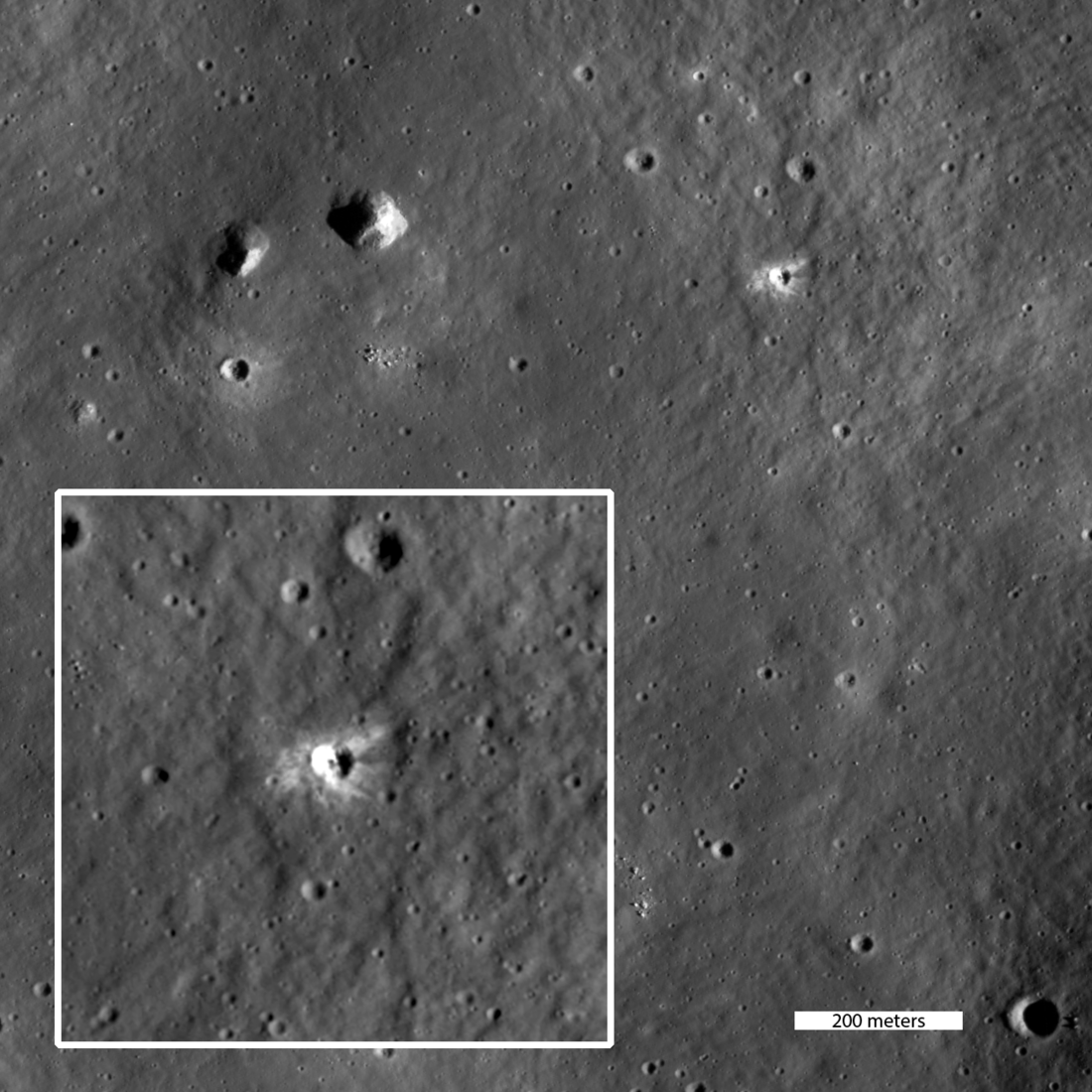
The Moon has been bombarded throughout its history. Although the days of dramatic collisions that formed massive craters are largely over, the Moon is still struck by space rocks (asteroids and comets) that create small, fresh craters. The LROC team identified this new 22-m diameter crater by detecting changes in images taken before and after the impact, constraining its formation to between December 2009 and December 2012.

The collision, which occurred just north of Römer crater, ejected bright material tens of meters from the crater rim, creating bright, sunburst-shaped rays. Over time, the rays will darken to the shade of the surrounding regolith as the material is exposed to space weathering. The LROC discovery of new craters is essential for understanding impact rates and crater degradation rates over time, as well as for planning safe, successful missions to the Moon.
See if you can find the new crater in the Zoomify below! Image: M1136306535. [NASA/GSFC/Arizona State University]
Related Featured Images
Published by Mateja Rothlisberger on 13 November 2025